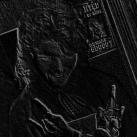Leaderboard
Popular Content
Showing content with the highest reputation on 06/02/2023 in all areas
-
This isn’t really so much of a direct or specific feedback, but, In my opinion, this piece showcases what people tend to think of when they think Beethoven. However, it is a common misconception that Beethoven’s music is all loud and fast. From what I read years ago, that is only true around 10-20% of the time. Even in the fastest passages such as the 3rd mvmt of the C# quasi una fantasia piano sonata, the dynamic stays at piano most of the time.3 points
-
Hello everyone. I tried to compose a Beethoven impression. Any feedback is much appreciated. Thank you very much.2 points
-
Hi everyone! I'm here to present my most recently finished work, the first movement of my String Sextet in G-flat major. I name this piece a subtitle of Heaven, Earth and Human to express my view on their relationship. (What a self bragging guy this is...) The piece is dedicated to my friend Johnson Ho. Guys and gals, please help me pray for his declining health and wish him all the best. He is definitely one of the reason why I start this piece and the reason why I finish this piece. Special thanks to @Thatguy v2.0 with his always original ideas which sparked my inspirations and new thoughts. Every time after discussion he always gives me new ideas on my composition and musical idea. And he's the one who make this audio perfect in my opinion. Thx so much and I'm so happy I get to know you in this forum and become friends with you as my musical guidance. I will post the mp3, pdf and YT video here first since I'm going to brag all those details after it haha🤣: Final First Draft of First Movement of String Sextet.pdf Final final first draft 01-06-2023 First Movement of String Sextet in G flat major.mp3 https://youtu.be/cI8MAn2XEPk If you don't want to read them, just ignore them!! (spoiler alert)😀😃😄😁😆😂🤣🥰😍🤩😘🤑😵🤢🤮🥶😨😱😭(spoiler alert) (spoiler alert) 😀😃😄😁😆😂🤣🥰😍🤩😘🤑😵🤢🤮🥶😨😱😭 (spoiler alert) (spoiler alert) 😀😃😄😁😆😂🤣🥰😍🤩😘🤑😵🤢🤮🥶😨😱😭 (spoiler alert) (spoiler alert) 😀😃😄😁😆😂🤣🥰😍🤩😘🤑😵🤢🤮🥶😨😱😭 (spoiler alert) (spoiler alert) 😀😃😄😁😆😂🤣🥰😍🤩😘🤑😵🤢🤮🥶😨😱😭 (spoiler alert) This piece is inspired by the thoughts of the great New-Confucian Chinese philosopher, Tang Chun-i. I immerse much in his philosophy and am always delighted reading his huge books. This work is particularly inspired by his thoughts of 9 states of mind, and I really hope I can depict what I feel towards the ninth state, the state of Heavenly(天) Morality Transcending (sorry for my bad English Translation... but this is way too technical for my standard....), his philosophy and Chinese thoughts in general. I choose G-flat major as the tonic since 1)the initial inspiration comes in this key, 2)it's the key of transcendence for me, 3) I want the sound less bright by get rid of those open strings notes, since truth for me is Aletheia in Heideggerian sense, which is hidden but to be disclosed only, rather than a bright thing to have. I know there are some discussions concerning key choice of strings recently, so I'm clarifying here. I had my initial thoughts for this piece in 2021 May when I woke up midnight, but then I was busying with my composing of Clarinet Quintet in C minor and thus ignored it. I wished to continue it in 2022 August after finishing my Quintet, but find it real hard to continue since I don't have the craft to do it. Until I joined YC and saw the following two posts: (Hey Jean @Jean Szulc I said I would learn something from your piece, and this is the product!!!!🤘🤘🔥🔥 Thank you! Will you post here again?) (Yo Vince my bro!!!🤘🤘 Thank you!) These two are absolutely great pieces (go check for them! Vince's piece is still on the "Our Picks" section) and they use the quartal harmony so well. I also learn from Jean's piece on the more extended techniques for strings. Then I had some ideas to finish the piece. This one gonna be something Chinese which is weird in a sense that despite being a Chinese I never write something Chinese. It's always Beethovanian and I really would like to reduce that element in my new piece. After writing the Clarinet Quintet in C minor, especially after having complete an all-controlling piece (esp. the 4th movement), I realized that I have too much reliance on forms and motives and I hope I can make them less explicit in my new piece. I love sonata form very much, but you cannot compose every pieces in it. And for me all the hard work pays off. For the instrumentation is two violins, two violas and two cellos. I love how the addition of 1 extra viola and cello (to a standard String Quartet) thickens the voice and strengthen the middle and low registers. It also gives more chance for viola and cello to sing while having their partners doing the accompaniment. For me the violins stand for the Heaven, violas stand for human and cellos stand for earth, though this is not mandatory interpretation of the piece as it's not always strict imagery. The structure of this piece is more a 3 part one. I have added some rehearsal marks on it to indicate the parts, and I will describe below with some (hopefully) interesting thoughts: (Timepin according to the video) First Section: 00:06 A, main theme. The accompanying texture comes from the first movement of Brahms's String Quintet no.2, one of my favourite of his piece. It starts with viola to emphasize the human call for me. Notice the theme in viola II in 00:23. That theme will appear throughout the whole movement. (Is this a Qi(氣) theme?)00:31 another important theme. 00:38. I like this theme for its contemplative nature. The theme comes from my Clarinet Quintet in C minor. Can you find it? I find it two days before in a wonder LoL. 00:54 B, continuation in high register with added voice. 01:24 C, transition, old theme disguised as a new one. 01:54 D, in D flat major/Mixolydian. The "Heaven" section in my original planning. 02:36 E, continuation in G flat major. 02:59 F, I love the conclusion in 03:13 very much. Modulate to C major to next section in 03:42 and I love the transition so much since it's real hard to compose. 03:42 G, the "Earth" section in my original planning, with cellos taking the lead 04:12 H, repeating the earth section in G-flat major 04:35 I, closing of first part, one of my favourite portion of the movement. I especially love that A-flat major outburst in 04:46. It's magical and I have no idea where does it come from as I only realize it's composed after I finish it. I always imagine Leonard Bernstein conducting this part, LoL. Very synchorinzed here, but it's denied and turn to minor (which will be further developed in the 2nd movement) Second Section: 05:21 J, the minor section. I believe this is the worst part of the movement but Vince's audio saves it. It appears a bit anguished here. The new theme in 05:28 is the basis of both section II and III. Some sort of fugato and imitations happen here though it's not time for it. 06:47 K. I love this part!! Very fluent in violins, and I like 07:06. It's a diminution of the theme of the previous part. I use sul ponticello here to make the sound more silvery. 07:29 L. Trying to reach back to opening section by quoting the first three notes of the theme. But it's external only since it's in F sharp major. Maybe the key difference is only visual and I may change it to G flat major. Also I don't know whether the harmonics work for the violins. I like this section though. 08:24 M. A pizzicato section further developing what's doing in part L. Daniel @Omicronrg9 must have inspire me for this part. I like the contemplativo section in 08:56 too with some call and response between the two violas (humans) 09:34 N. Transition to section III. I freakingly love this part! The transition for me is smooth, and it's transforming the minor theme of section II to a major/pentatonic one. Third Section. 10:05 O. Introduction of the fugue subject. 10:20 is the start of a triple fugue, with the subject in Violin the main one for me. 10:52 theme from 00:38 quoted. Subject through G flat, Eb minor, G flat. 11:10 P. First longer episodes, theme from part F quoted Subject through D flat. I love the preparation for the first climax of the fugue in 11:41. I love the climax in 11:48! Subject in G flat. 12:03 Q. Another episode to direct to C flat major. Themes in part D and the theme in 00:31 quoted. Subject in C flat and A flat minor 12:42 R. The great Con spirito! One of my favourite portion of the movement, The A-flat major is chosen to echo in climax of section I in part I. Final appearance of the subject of the fugue in climactic G-flat major, and leads directly to the coda. In 13:17 I have a moment when the first cello is higher than the violins to correspond with a Chinese philosophical concept in the book of Change, when the power of earth is up and the power of heaven is underneath, it's auspicious since the heaven and earth are communicating instead of isolating themselves. The Chinese words 乾下坤上 is written in the score though lest you know Chinese haha! 13:28 S. Coda, with a decreasing of tempo. I am initially perplexed whether to write like this, since my little Wind Quintet piece has kind of same treatment in its coda. But I just decided to write like this since it's beautiful and the two pieces are interconnected anyway. I want this passage to be like human successfully synchronize with the heaven and earth. It's quite similar to a Chinese opera here in my opinion. I freakingly love that half cadence in 14:03!! The coda ultima in 14:08 is written much earlier, in Nov 5th 2022. I know the conclusion but find the ways to it very difficult. But I'm happy I am able to achieve this ending!! This plan to be a 2-movement work, but I'm not gonna compose the 2nd movement until I'm ready. It will be very different from this movement though. It's such a long post LoL. Feel free to criticize or critique it if you have anything you don't like about it, or compliment it if you want! I don't mind any comments and I will love to have all of them whether they are long or short, good or bad, positive or negative! Thanks for listening! If you happen to read through this LONG post, thanks so much for it!!!!! I have too many things to tell LoL. Love y'all!! Update: The first part of the second movement of this Sextet is posted on Jun 2024: The second part of the second movement of this Sextet is posted on Jan 2024: And here is the entire second movement posted in March 2025: Henry1 point
-
1 point
-
1 point
-
Hi Oliver. I would say that the strings at the beginning don't convince me much. Apart from that, it was a really enjoyable tune. Kind regards!!1 point
-
1 point
-
1 point
-
Thank you very much both of you. Good points. It made me realize that to do a good impression you should probably go a bit deeper into the composers music rather than staying on the surface. It's actually really valuable feedback. Thanks! 🙂1 point
-
Hey @Bjarke, Talk about this music alone, it's amazing! What a fiery power it has! My favourite part is b.89 when the B minor section is returning to c minor. What a modulation you have there combined with power! To talk about Beethoven quotation, this is definitely dominanted by the fate motive. B.26 reminds me of the first movement of Waldstein. B.33 reminds me of his Appassionata. B.47 reminds me of the fugue subject of the Hammerklavier. B.97 is a quotation of Bee's op.2 no.1, last movement right? Talking of Beethovanian cliche, however, I agree with @PCC. People always think Beethoven a loud and sf guy like an angry emperor. Just listen to his slow movements of his late quartets, or the last three piano sonatas, or Missa Solemnis. He's much more than fast and loud. This piece is no exception, but it's just an impression so it's fine since Bee does give that impression to many people. The accents in b.5,7, 46, 48 etc in LH is literally unplayable with this kind of speed. It maybe playable for a computer rendition but not for a hand! Thanks for sharing! Henry1 point
-
For me you have many ideas at hand. Rather than looking for new ideas you can simply develop your own ideas at hand first! The opening 4 bar melody in C# minor, contrasting 5 bar theme in E major in b.5-9, transitional arpeggio in b.10-11, b.14-21 staccatissimo theme, b.22-27 triplet theme where you develop from b.2, all can be taken to follow your present passages! Economical use of materials is important for me and you should try using your present materials before new varieties must be added. Henry1 point
-
Hi @Bjarke, Do you play piano yourself? This etude can be really difficult to be played! For me the piece very exhausting to pianists since playing all those spread chord can be very tiring for the RH! The Bb LH in b.1-3, 28 is right on the RH zone there. That will make it almost impossible to play cleanly. I think the Db of RH in b.1-2 can have C# instead to prevent those D natutals. In b.28-32 and 75 I suggest you to use bass clef for RH for those low notes. Is b.58-61 played by both hands? This will be easier yo play instead of having RH playing those thick chords quickly! You can add a m.s. marking there to indicate notes by L.H. though. The etude itself is intense. You can add more details like dynamic marking and slurs to make it even more intense. Thanks for sharing Henry1 point
-
Hi @Awsumerguy, Certainly this is enjoyable music! In fact for me the lack of tonal structure in post tonal music makes it great to present the sudden outbursts in your piece here. I agree with everything @Quinn said. Your control of time is great here with the sudden outbursts and suitable rests, like a recitative. For me this is a short prelude, so I don't mind having less clear thematic structure and coherence here. For me I think so too, that's why I never try writing one. In tonal music you can just follow the standard harmonic progression to develop your music, but in a post tonal one you will have to find one of your own, which makes your piece original but at the same time difficult to compose sometimes. I won't say I deplore it, but that's not my thing to do and I am incapable of composing one in that style! I would like to ask, what do you mean by "with extreme ardour" in b.6 when it's p there? Also why will it be "waltz like" there? Also I feel like some of the accidentals there is unnecessarily difficult, like the C double flat can be Bb in b.12 LH, B double sharp can be C# in b.21 LH, G double flat can be F natural in b.27 RH. You can also add a metronome marking at the beginning and othere places in order to make the tempo clear especially for a modern piece. Of course not! In fact the difference of styles of the posts here is what makes YC a great place. People can immerse in different styles and learn from them. For me I don't find it difficult at all. You can count on him since he has written great post-tonal pieces including this one: Thanks for sharing! Henry1 point
-
You've definitely got the "palette" of that sort of style down, but I would say that the bassline could be more active and move more contrapuntally to the melody, and your string accompaniment is stepping on the melody a fair bit1 point





